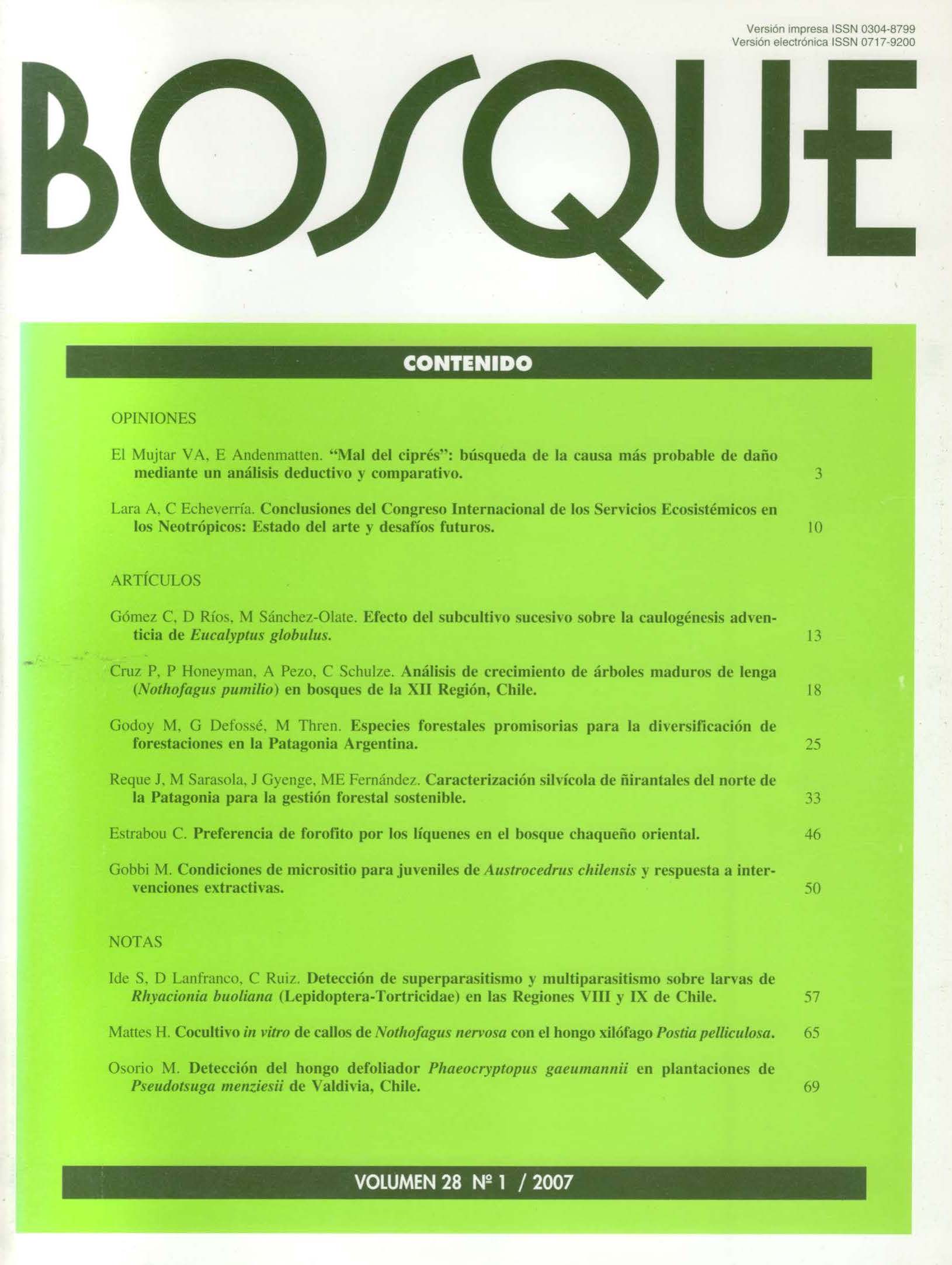Main Article Content
Apr 30, 2007
Abstract
A situation of abnormality in plantations of Douglas-fir (Pseudotsuga menziesii) in the environs of Valdivia, Chile, was reported, which motivated a sanitary prospection. Stands of Douglas-fir of 2 to 34 years old and seedlings of a nursery were analyzed. It was stated that in trees of all these ages the foliage showed variable symptoms, from the normal green colour, until the brown yellow. By means of a magnifying glass, numerous very small spherical structures of black colour on the underside of infected needles were observed, aligned throughout the stomatics bands, which altogether gave a blackish aspect or of soot. These structures were in needles of trees of all the prospected ages and all showed symptomatological range in them. In the most extreme cases, the crown of the trees presented defoliations, and only needles of the last vegetative period were present. The microscopic analyses allowed to determine that the structures corresponded to ascocarps (pseudothecia) of the Phaeocryptopus gaeumannii fungus, recognized as pathogenic foliar of the Douglas-fir. These meaning of the presence of this agent in the other regions of the world is reviewed and beginning of mutidisciplinary studies set out for Chile to approach the problem is proposed.


